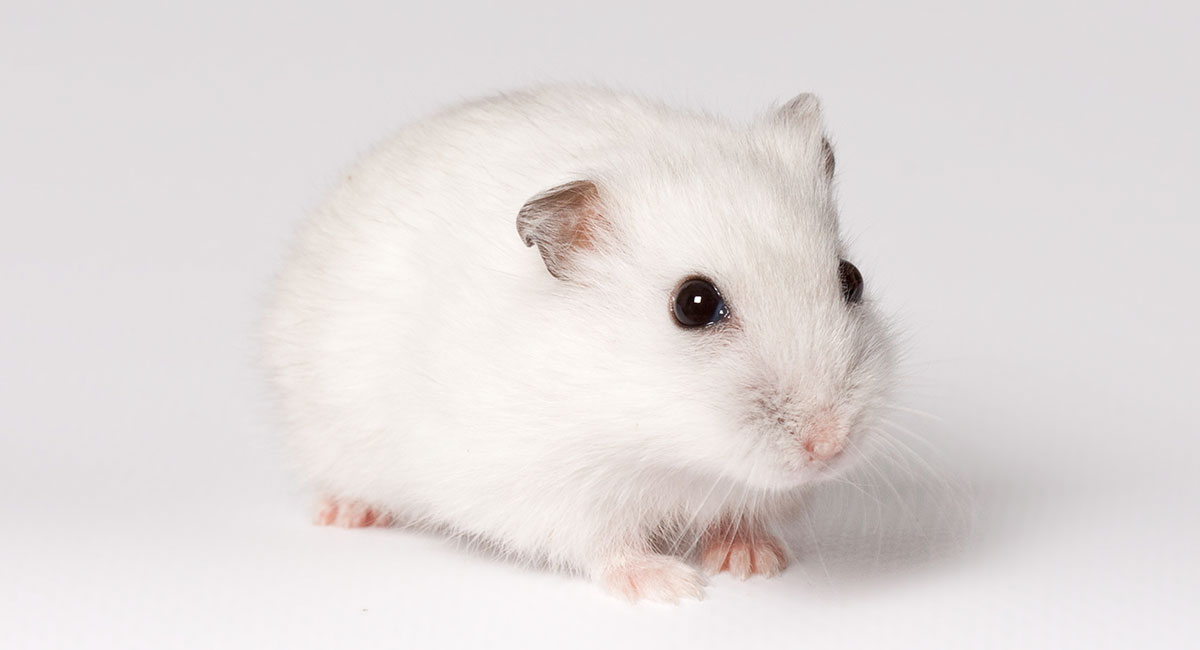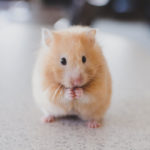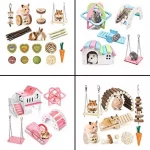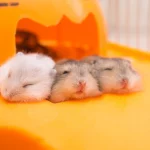The Winter White Hamster is a dwarf hamster that gets its name from the way its fur changes color in the winter.
This pocket pet is easy to take care of, so it’s great if you don’t have much time or room. It is also the most social type of hamster and can keep you entertained for hours.
In this article, we’ll learn some interesting things about the Djungarian or Winter White Dwarf hamster.
Also, we tell you everything you need to know about how to care for a Winter White Hamster. How to feed and take care of this little furry creature, as well as how to make friends with them.
We talk about the health problems a Winter White Dwarf Hamster could have and how to tell if your pet is sick.
But first, let’s look at where this interesting little guy with the changing coat came from.
Winter White Hamsters
The Winter White Hamster is a dwarf hamster that gets its name from the way its fur changes color in the winter.
This pocket pet is easy to take care of, so it’s great if you don’t have much time or room. It is also the most social type of hamster and can keep you entertained for hours.
In this article, we’ll learn some interesting things about the Djungarian or Winter White Dwarf hamster.
Also, we tell you everything you need to know about how to care for a Winter White Hamster. How to feed and take care of this little furry creature, as well as how to make friends with them.
We talk about the health problems a Winter White Dwarf Hamster could have and how to tell if your pet is sick.
But first, let’s look at where this interesting little guy with the changing coat came from.
Winter White Dwarf Hamster size and features
There are two main types of hamsters, but both are small enough to be called “pocket pets.”
The more common Syrian, or Golden, Hamster can grow to be 7 inches long. The Djungarian hamster, on the other hand, is about half this size.
They grow to be between 2 and 4 inches long and weigh between 1 and 1 1/2 ounces. And then in winter, they still lose weight!
The White Dwarf in Winter Hamsters is round, almost like little balls of fur. Their tail is so short that when they sit down, it almost goes away.
They have little feet with fur and a dark stripe across the top of their bodies. Usually, their eyes are black. If their eyes are red, that means they are an albino.
Their colour is another thing that sets them apart from other kinds of hamsters.
Winter White Hamster colors
The Winter White Hamster’s coat is usually dark to light brown, with a dark stripe down the middle of its back. The fur on the face is grey to brown. During the summer, their colours help them blend in with the colours of the earth where they live.
There are a lot of other natural colours of Winter White Hamsters, like pearl and sapphire. The pearl hammie is a beautiful soft white colour. The sapphire hamster’s fur is a beautiful blue-grey colour, and its ears are greyish with black edges.
As winter comes and the days get shorter and snow covers everything, the Winter White Hamster’s brown fur changes to white.
Scientists have been very interested in this unique trait for a long time. They have found that the colour change is caused by both genes and a hormone called prolactin.
Studies have also shown that the change is not caused by changes in temperature but by changes in the length of daylight. For the fur to change colour, there must be less than 14 hours of light.
The winter fur coat of a domestic Winter White Hamster can change, but the amount of change varies. Some hamsters will turn completely white, while others may just get white spots or patches in some places.
The next question you might want to ask is how well this species of hamster has adapted from living in the wild to living as a pet.
Winter White Hamster behaviour
Winter White Dwarf Hamsters are known to be the easiest to train out of all the different kinds of hamsters.
If you want your little hamster to grow up to be a friendly, curious, and confident pet, you should handle it every day from a young age on.
But you should also know that when they are between one and two months old, they want to nibble on everything, just like a human toddler. This could be your finger.
If not, hamsters will probably only bite when they are scared. Before you grab your hammies from above and scare them into defence mode, talk to them.
To pick up your hamster, cup your hands around it gently or let it climb into a toilet paper roll first.
Once you have them in your hand, they are easier to handle, and after a while, they will get used to your voice and be happy to be picked up and played with.
Winter White Hamster lifespan
The average life span of a domesticated Winter White hamster is two to three years.
If that seems like a short amount of time, think about the fact that these animals may only live a year or less in the wild!
10 Facts About the Winter White Dwarf Hamster
- The White Winter Dwarf The Siberian hamster, which is also called the Russian hamster, is from Siberia and Kazakhstan.
- Its Latin name is Phodopus sungorus. They are popular pets in Europe, Asia, and North America. In the US, they are one of the five most popular types of hamsters.
People often mix up these hamsters with Campbell’s Russian Dwarf Hamsters (Phodopus campbelli), which look and are about the same size.
- Erin Ramsey, co-president of the California Hamster Association in Southern California and owner of Cheeks and Squeaks Hamsters, says that your Winter White, which is a dwarf hamster, will probably grow to be 3 to 4 inches long. Their bodies are round and oval-shaped, and they have fur on their feet and legs. There are sapphire, pearl, and natural pearl as the three main colors.
- This cute hamster’s fur turns white in the winter, which is how it got its name. Winter White Dwarf Hamsters have grey-brown coats with a dark stripe down the back the rest of the year.
In the wild, this change of coat helps the animal blend in with the snow. It can take a few days to a few weeks for the colour to change, and some people say that their Winter White Dwarf Hamsters change colour in waves from head to tail.
The colour change can be as small as a few faded spots or as big as your hamster’s whole coat turning white. This usually doesn’t happen in captivity because the animal isn’t exposed to the seasonal changes in light.
- Male Winter White Dwarf Most of the time, male hamsters are bigger than females, and “the male has a bigger scent gland on its belly,” says Ramsey.
- On average, Winter Whites live between 1 1/2 and 2 1/2 years. They don’t get sick as often as other hamsters, but they can get sick just like other hamsters.
- In general, Winter White Dwarf Hamsters are less likely to bite and have a more patient personality than Campbell’s hamsters. Ramsey says that because these hamsters are small, they are better for older teens and adults than for younger children. However, if families with young children put in the time, they can do well with these hamsters.
Ramsey says, “They all have different personalities and are fun to watch when they are in the right places.” “They like to play in a safe playpen and get to know people.”
What if you have other pets in your home?
Ramsey says that hamsters should never be around other pets, but as long as they are safe in their cage, they do fine in the same environment.
- This species is social, so it’s best to keep them in pairs or small groups.
Ramsey says, “Same-sex, same litter works out most of the time, but they do have a pecking order.” “They must be separated right away if one is more dominant or picks on the other.”
It’s not a good idea to keep a mixed-sex pair or group of hamsters because they will breed, and hamsters can have litters every three weeks. Ramsey says that if this is your first time taking care of a hamster, you should start with a single hamster.
- Introduce Winter White Dwarf Hamsters who will live together at a young age, preferably between 5-8 weeks, to make it easier for them to get along. Even better is if they are from the same litter or lived in the same place. Hamsters who have always lived alone might not take a new friend well.
- Ramsey says that the best cages for Winter White Dwarf Hamsters have at least 450 square inches of space on the floor that is not broken up. The bigger the cage, the better. There are bar cages, 40-gallon breeder aquarium tanks, and bin cages made from 110-quart plastic storage tubs.
Use a wire mesh lid to keep things from falling out and hurting people. And because dwarf hamsters can fit through the bars of many wire cages, you should think about how far apart the bars are when choosing a home for your hamster.
- Your new pet will love to dig, so give your Winter White Dwarf Hamster soft things to sleep on. You can choose from wood shavings, soft bedding, and shredded paper, like CareFresh Custom Hamster & Gerbil Paper Bedding. Ramsey says that your pet should have about 4 inches of bedding to dig into in his cage.






